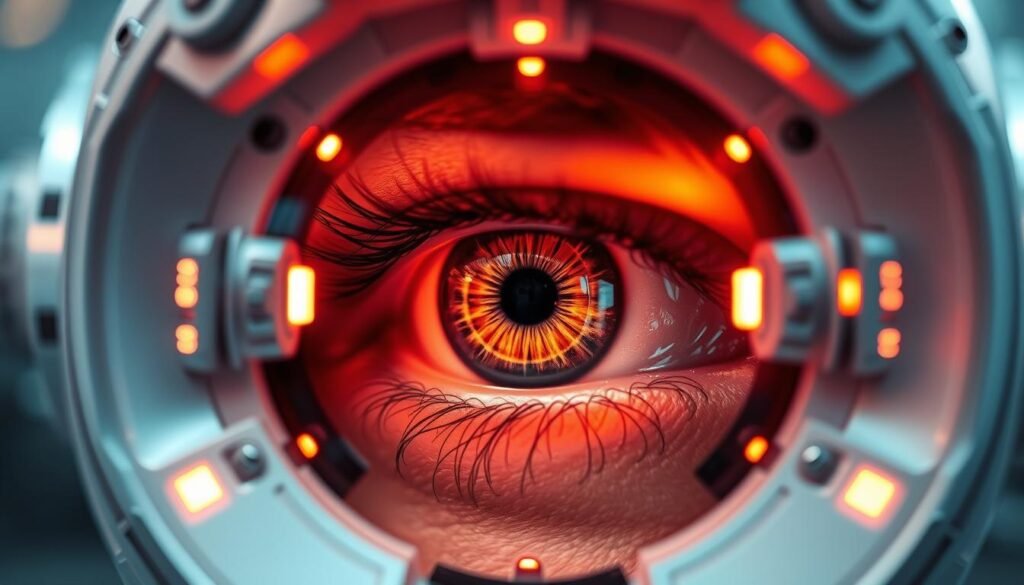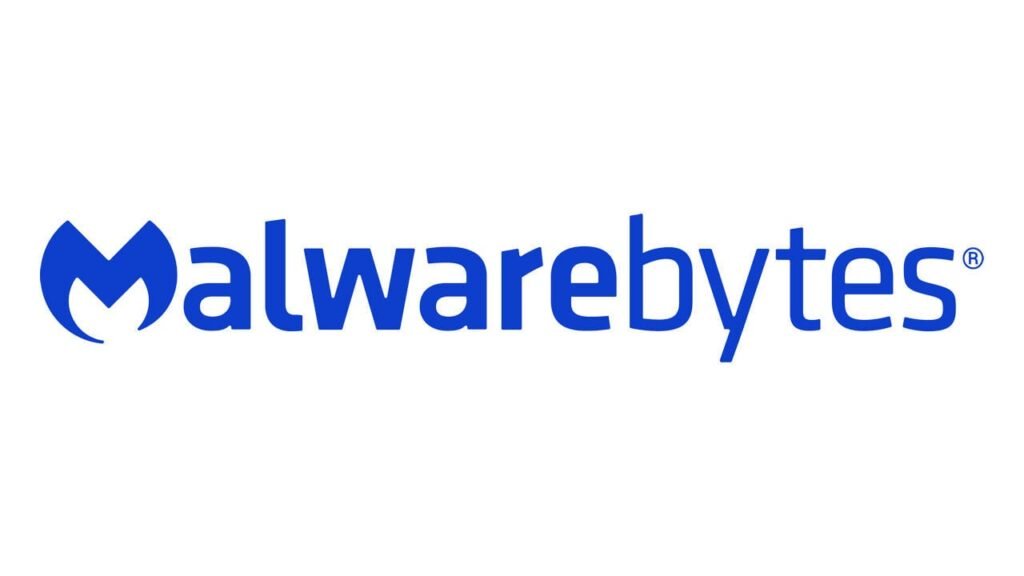Did you know biometric authentication is becoming more popular? It's now a top choice over traditional passwords. This is because biometrics are hard to fake and devices can quickly collect biometric data12. In today's world, passwords are not just old-fashioned but also not very secure. So, it's time to look into the best biometric alternatives.
This article talks about biometric authentication solutions. These use unique physical or behavioral traits like fingerprints and facial recognition to check who you are. Biometrics make security better and make using devices easier. It's a big step forward in fighting cyber threats.
Microsoft's Windows Hello lets you log in without a password using biometrics. Big names like Dropbox and Bank of America are also starting to use FIDO authentication. This shows a big change in how we think about keeping our digital lives safe13.
Key Takeaways
- • Biometric authentication enhances security by using unique physical traits.
- • It improves user convenience by eliminating the need for passwords.
- • Major companies are implementing biometric solutions for enhanced security.
- • Various biometric methods include fingerprint scanning, facial recognition, and iris scanning.
- • Biometric technology is rapidly evolving, offering promising advancements in security.
The Limitations of Password-Based Authentication
Passwords are still widely used but come with big risks. People often get tired of making new, strong passwords for all their accounts. This tiredness makes their passwords weaker, increasing the risks of passwords.
Common Weaknesses in Password Usage
About 52% of people use the same password for many accounts, making them more vulnerable4. Many choose simple, easy-to-guess passwords5. This makes it easy for hackers to get into their accounts. Even though they know they should pick stronger passwords, remembering them is hard.
The Impact of Data Breaches
Data breaches are a big problem, costing companies an average of $70 per password reset4. Employees often wait a long time to get help when they can't log in4. This problem is serious, with many systems still using outdated software, making them vulnerable4.
As password weaknesses persist, the need for better ways to log in grows. This includes using biometrics and passkeys. The slow move to these new methods shows how urgent the need for better security is.
Why Biometric Authentication?
Biometric authentication offers a modern way to replace old passwords. It uses unique physical traits to boost security and ease of use. As we rely more on secure biometric technology, knowing its benefits is key.
Increased Security
Biometric authentication is much safer than traditional passwords. Over 60% of data breaches are caused by weak or stolen passwords, says Verizon6. Since biometric traits are unique to each person, it's much harder for unauthorized access7. Plus, biometrics are better at fighting off attacks than passwords7.
User Convenience
Biometric authentication makes life easier for users. You don't have to remember complex passwords, making access quick and easy8. A Spiceworks report shows 62% of businesses use biometric tech to cut down on password reset costs6. This means biometric systems make things more efficient by cutting out recovery steps and making logins smoother6.
Best Biometric Alternatives to Traditional Passwords
Organizations and individuals are looking for better ways to keep their data safe. Biometric technologies are becoming popular for this reason. They use unique biological features like fingerprints, faces, iris scans, and voices to secure access.
Overview of Biometric Methods
There are many biometric methods, each with its own benefits:
- • Fingerprint Recognition: It's easy to use and widely accepted.
- • Facial Recognition: It's very accurate, even with identical twins.
- • Iris Scanning: It's very secure because eye patterns are unique, but it can be expensive.
- • Voice Recognition: It uses unique voice patterns to add extra security.
Comparative Analysis of Biometrics
Comparing these methods shows some interesting differences. Fingerprint scanning is easy to use but not as common. Facial recognition is very accurate and popular, making it easy to confirm identities.
As biometric technology grows, it's becoming a top choice for keeping data safe. It's strong against common security threats, making it a good alternative to passwords.
| Biometric Method | Security Level | User Friendliness | Cost to Implement |
|---|---|---|---|
| Fingerprint Recognition | Moderate | High | Low |
| Facial Recognition | High | High | Medium |
| Iris Scanning | Very High | Moderate | High |
| Voice Recognition | High | High | Medium |
Biometric methods are becoming more popular for their security and versatility. In 2022, over 1802 data breaches were reported in the USA9. This shows how risky traditional passwords are. More people are turning to biometrics because 51% still reuse passwords9. This makes biometric solutions a key upgrade in security10.
Fingerprint Recognition Systems
Fingerprint recognition systems are very popular today. They are a key part of secure biometric technology. It's important to know how they work to understand their benefits and drawbacks.
How Fingerprint Scanning Works
Fingerprint scanning looks at the unique patterns on your fingers. It creates a digital template to store your fingerprint data. Many industries use this technology for better security and ease of use.
The market for biometric fingerprint authentication is growing fast. It's expected to hit $9.41 billion by 2027, with a growth rate of 14.6%11.
Benefits and Limitations
Fingerprint recognition is quick and easy. It lets you access devices fast, without the need for passwords. This is great for mobile devices and financial transactions.
But, there are challenges. Scanners can be affected by the environment and may not always work well. Despite this, the technology is still widely used because it's affordable and effective12.
| Feature | Benefits | Limitations |
|---|---|---|
| Speed of Authentication | Quick access to devices and accounts | Potential failure in adverse conditions |
| User Convenience | Eliminates the need for passwords | Initial setup costs can be high |
| Applicability | Widely used in various sectors | Data privacy concerns may arise |
This table shows the good and bad sides of fingerprint recognition systems. It highlights their role in secure biometric technology.
“Fingerprint authentication provides enhanced security compared to traditional password-based methods, reducing fraud risk while improving user experience”11.
Fingerprint recognition is getting better, making our data safer and earning our trust13.
Facial Recognition Software
Facial recognition software is now key in keeping places safe. It uses cameras to take pictures and then checks them against stored images. This way, it quickly and accurately checks who someone is.
Functionality and Implementation
Soon, half of the world will use facial recognition every day. In the U.S., Customs and Border Protection aims to scan 97% of travelers by 202414. This tech is very good, working 99.97% of the time when it's perfect14.
It's used everywhere, from police departments in big cities to businesses for quick checks. This makes things safer and faster for everyone, making it a big hit in passwordless systems15.
Pros and Cons of Facial Recognition
Facial recognition has many good points. It helps police work better and makes people feel safer14. It also helps find missing people and intruders, making a big difference in many places14.
But, there are also downsides. People are worried about their privacy and how it might be used wrongly. There are also worries about fairness because of biases in the tech16. Fixing these issues is important for the future of facial recognition.
Iris Scanning Technology
Iris scanning technology is becoming a key player in secure biometric authentication. It looks at the unique patterns in the eye's colored part. This makes it hard to fake, offering a high level of security.
It's great for verifying people accurately. Many organizations are choosing it to boost their security.
Understanding Iris Recognition
Iris scanning uses high-resolution cameras to capture the iris's detailed images. This is a unique feature for each person. A survey found 19% of people like iris scanning for biometric authentication17.
This tech is hard to hack because iris patterns stay the same over time18.
Security Advantages
Iris scanning offers big security benefits. It's the most secure biometric method, perfect for places like government buildings and airports19. It also makes managing passwords easier, improving user experience and productivity18.

| Biometric Method | User Preference (%) | Security Level |
|---|---|---|
| Fingerprint Scanning | 53% | High |
| Facial Recognition | 15% | Moderate |
| Iris Scanning | 19% | Highest |
| Traditional Passwords | 3% | Low |
The use of iris scanning shows a shift towards safer, more functional biometric tech181719.
Voice Recognition Technology
Voice recognition technology is changing how we verify identities. It uses over 100 unique voice features to match voices with passwords20. This method is becoming popular in call centers and finance, making transactions safer without passwords.
How Voice Biometrics Operate
Voice biometrics work by using voice to unlock devices or approve transactions. For example, Samsung's Bixby lets users unlock screens with voice commands20. The voice recognition market is growing fast, expected to hit $27.16 billion by 202521.
Challenges of Voice Recognition Methods
Despite its benefits, voice recognition has its hurdles. Health issues, tone changes, accents, and background noise can lower accuracy21. Apps like AppLock and OneFaceIn use voice authentication, but there are still issues with noisy places and meeting rules22.
Developers must keep improving voice recognition to make it reliable and user-friendly.
Multi-Factor Authentication Options
Multi-factor authentication (MFA) uses different ways to verify identity for better security. It combines traditional passwords with biometric options. Using passwordless authentication methods makes things easier and safer for users. This way, companies can fight against password hacks by using unique biometric traits like fingerprints and facial recognition23.
Combining Passwords with Biometrics
Adding passwords to biometric scans creates a strong security system. For example, in finance, you might enter a password and then scan your face. This method keeps things safe while making it easier for users. It also stops unauthorized access24.
Hardware security keys are another safe option. They can't be easily hacked online25. Companies can also use software development kits (SDKs) to make their MFA solutions better. This makes their apps more secure and user-friendly23.
Applications in Different Industries
MFA is used in many fields like finance, healthcare, and e-commerce. In finance, it keeps transaction data safe from hackers. With over 1,800 data breaches in 2022, using MFA is more important than ever25.
Adaptive authentication changes security levels based on the risk. This balances user experience with security25. Businesses that use these methods can make their tech environment safer23.
Comparing Biometric Systems: Security vs. User Experience
Biometric systems are all about finding a balance between security and how easy they are to use. They've changed the game in cybersecurity, but there are still hurdles. Many people are hesitant because of privacy worries and fears about how their data might be used.
Understanding User Hesitation
Some folks are slow to trust biometric tech because they worry about identity theft and data breaches. In 2019, a big leak exposed over a million fingerprints and facial scans, showing the risks26. Yet, old-school passwords are weak and easy to hack. Biometrics offer a safer way to log in, making it much harder for unauthorized access27.
Balancing Security and Usability
It's key to make biometric systems both secure and easy to use. They make logging in simple, without the need for hard-to-remember passwords27. Adding biometrics to traditional methods makes things even safer27. Still, worries about privacy and the chance of fake biometric data are big concerns. To keep things right, data should be stored locally and encrypted. Regular checks on these systems are also a must to follow privacy laws26.
| Biometric Method | Security Strength | User Experience | Challenges |
|---|---|---|---|
| Fingerprint Recognition | High | Convenient | Potential spoofing and data breach risks |
| Facial Recognition | Very High | Seamless | Privacy concerns due to data storage |
| Iris Scanning | Exceptional | Moderate | Expensive hardware requirements |
| Voice Recognition | Moderate | Hands-free | False positives and negatives |
Future Trends in Biometric Technology
Biometric technology is changing fast, thanks to new ideas and the need for better security. The market is expected to reach USD 94.23 billion by 2028. This shows how important biometric solutions are becoming in many areas28. New uses of artificial intelligence and machine learning are making biometric systems more accurate and reliable.
Advancements in Biometric Authentication
Behavioral biometrics are becoming more common, especially in banking. They use machine learning to spot fraud by analyzing how users act. This makes it harder for fraudsters to get in29. Also, using different biometric methods like face, fingerprint, and voice recognition is becoming more popular. This mix offers better security and makes things easier for users.
Predicted Developments in the Field
In healthcare, biometric tech will help identify patients better and monitor them from afar28. More places are using multiple biometric methods together. This adds an extra layer of security and makes things smoother for users28. Also, there's a focus on continuous authentication. This means security checks keep going, adapting to the user's situation, not just once.

To learn more about these changes, you might want to explore the latest in biometric tech. For a detailed look, check out this informative source2829.
Conclusion
The move from passwords to biometrics is a big step up in security and ease of use. Using fingerprints, facial recognition, iris scans, and voice checks offers better protection than old passwords. These methods are hard to fake or steal, making them very secure3031.
Biometric tech is also proving itself in real life. For example, Apple's Face ID is super accurate, failing only once in a million times30. Companies like Mastercard have seen a huge drop in errors after using biometrics, showing quick wins3032.
As online threats get worse, moving to biometric login is key for everyone. By investing in these systems, you get stronger protection and a smoother login process. This makes users happier and more secure3032. The future of safer online interactions is clearly with biometrics.



